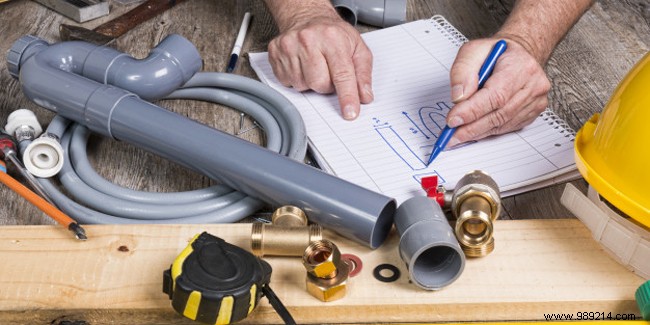
For your plumbing work, several materials are possible, including copper and PVC. These versatile materials used for pipes and fittings each have particular characteristics. The traditional copper, noble and aesthetic, is still very present because of its great qualities, despite its much higher cost. More economical, PVC is a discreet material that is certainly less solid, but suitable for draining rain and waste water. Discover their advantages and disadvantages to make the best choice.
The advantages and disadvantages of copper pipes and fittings
Copper pipes and fittings are the most traditionally used items in plumbing. It is indeed a solid and old material that is a reference in the field of plumbing. Copper has the advantage of being very resistant, because it can convey both hot and cold water, but also be used for your heating installation.
It is an expensive material, but it is aesthetic; proof is, it is very often recycled to serve as decoration in the house. It is also an infinitely recyclable and naturally antibacterial material.
There are two types of copper:
- Annealed copper , which is in the form of a crown 5 to 50 meters long. Malleable, it is generally used for long pipes, fittings and recesses.
- Work-hardened copper , which is sold in the form of bars with a length of 1 to 5 meters. It is rather reserved for small exposed pipes.
What are the advantages of copper pipes and fittings?
- Copper can carry both hot and cold water without ever moving. It can even be used for heating.
- It is an infinitely recyclable material.
- It is more aesthetic.
- Very solid, it is durable and resistant. It tolerates temperature variations very well.
- It is a noble, traditional material renowned for its reliability.
- It is naturally antibacterial.
What are the disadvantages of copper pipes and fittings?
- The higher cost of copper can be a drag.
- The installation of copper requires the intervention of a competent professional, as it is very demanding.
The advantages and disadvantages of PVC pipes and fittings
PVC pipes and fittings have been widely used for some years. Renowned for its lightness and its ease of working and installing, PVC is often reserved for the evacuation of wastewater and rainwater. Very economical, it has the advantage of not requiring any welding, which makes its installation possible by experienced DIYers, without necessarily calling on a professional. This is the material that has replaced lead pipes, which are now banned.
PVC has excellent acoustic insulation, even superior to that of copper. On the other hand, it is very sensitive to UV, which makes its use impossible for exposed pipes. Unlike copper, it does not support strong pressures and heat and it will therefore tend to expand and deform.
There are two types of PVC:
- Classic PVC
- Superchlorinated PVC (PVC-C), more insulating and resistant than conventional PVC, it can be recessed without protection.
What are the advantages of PVC pipes and fittings?
- PVC is a material that is easy to transport, install, work with and set up thanks to its lightness and great malleability.
- It does not require any fittings.
- Its cost is very attractive since this material is economical.
- It is an excellent acoustic insulator that muffles the sound of water.
- It comes in a multitude of colors, a little more aesthetic. It can even be painted to adapt to changes in your interior decoration.
What are the disadvantages of PVC pipes and fittings?
- It is to be reserved for the transport of waste water and rainwater.
- It does not support high heat and pressure. These tend to expand and deform it. It is indeed the weakest material on the market.
- It does not tolerate being exposed to UV rays, which prevents any apparent use.
- It reacts badly to the presence of certain chemicals.
- PVC cannot be recycled and is not biodegradable, so it is not an environmentally friendly material.
